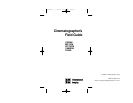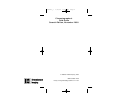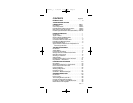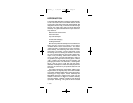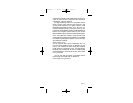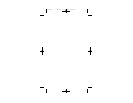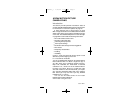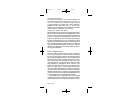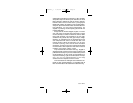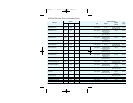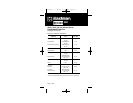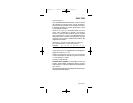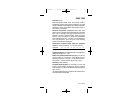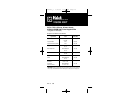MPF-2 9/98
Technical Inform a t i o n
For technical information in the United States, call
the Kodak Information Center (KIC), 9:00 a.m. to
7:00 p.m. (Eastern time), Monday through Friday, at
1 (800) 242-2424. In Canada, call 1 (800) 465-6325,
Monday through Friday, from 8:30 a.m. to 5:00 p.m.
( E a s t e rn time). Outside the United States and Canada,
contact Kodak or a distributor in your country.
A Note on T-Stops and F-Stops
When discussing lens aperture size, cinematographers tradi-
tionally refer to t-stops while still photographers refer to
f-stops. A t-stop is a measure of actual light transmission by
the lens. An f-stop is the theoretical ratio of the lens’ focal
length to the diameter of its entrance pupil (appro x i m a t e l y
the aperture diaphragm size in a symmetrical lens). What
relates the two is the lens’ efficiency in transmitting light; if
the lens could transmit all the light entering it, its t-stop and
f-stop would be the same (ANSI PH 22.90-1987, A p e r t u re
Calibration of Motion Picture Lenses, Method for Deter-
m i n i n g , gives full details).
Color Te m p e r a t u re
The color quality of some light sources can be stated in
t e rms of color temperature , and is a measure that defin e s
the color of a light source relative to the visual appearance
and expressed in degrees Kelvin (K). There are at least two
important points to keep in mind when using color temper-
a t u re values. F i r s t , color temperature refers only to the
visual appearance of a light source and does not neces-
sarily describe its photographic effect. S e c o n d , c o l o r
t e m p e r a t u r e does not take into account the spectral distri-
bution of a light source. Unless the light source has a
continuous spectral distribution, its effective color temper-
a t u re alone may not be reliable as a means of selecting a
suitable correction fil t e r. For example, flu o rescent lamps do
not have the continuous smooth spectral-distribution curve
that is characteristic of a tungsten-filament sourc e .
It is possible for two or more light sources to be described
as having the same color temperature, but the photographic
results obtained with each may be quite diff e rent. Only a
033text_c 1/16/02 11:07 AM Page 8



